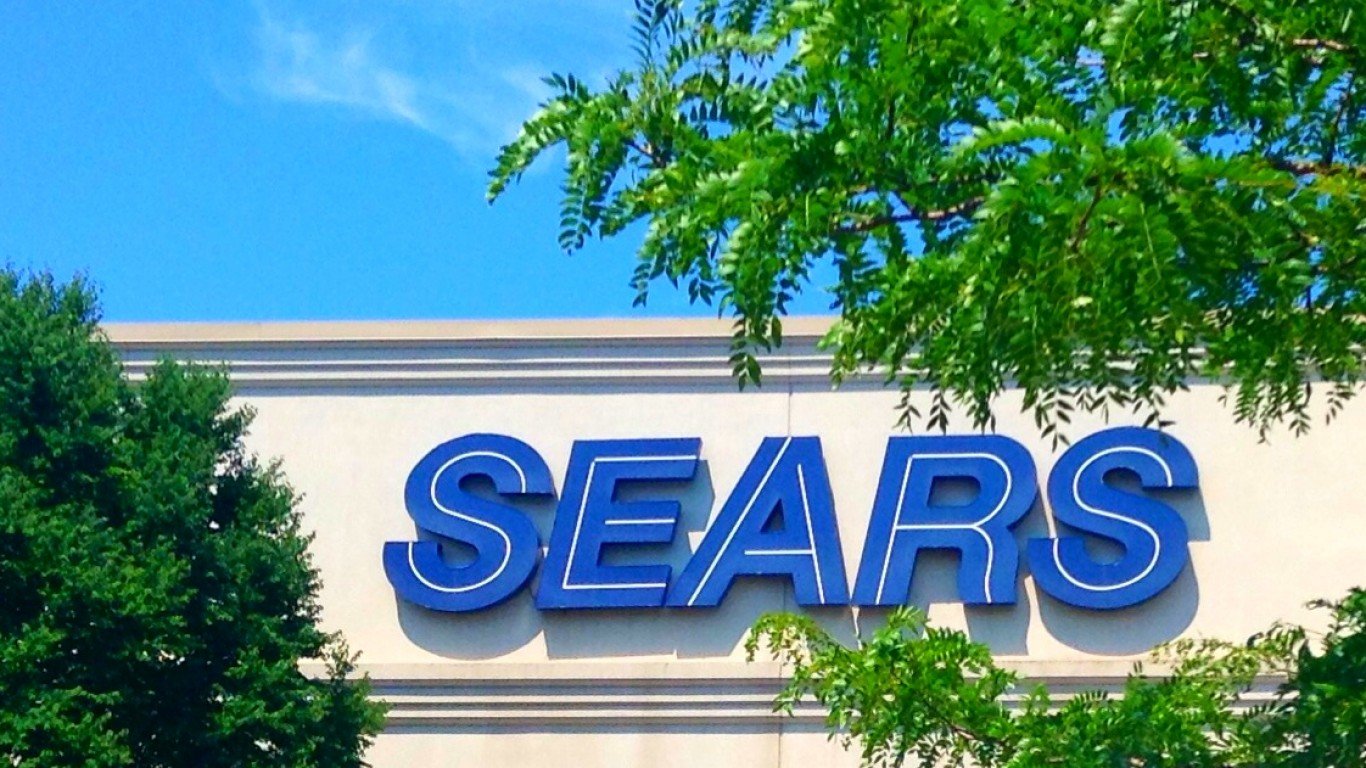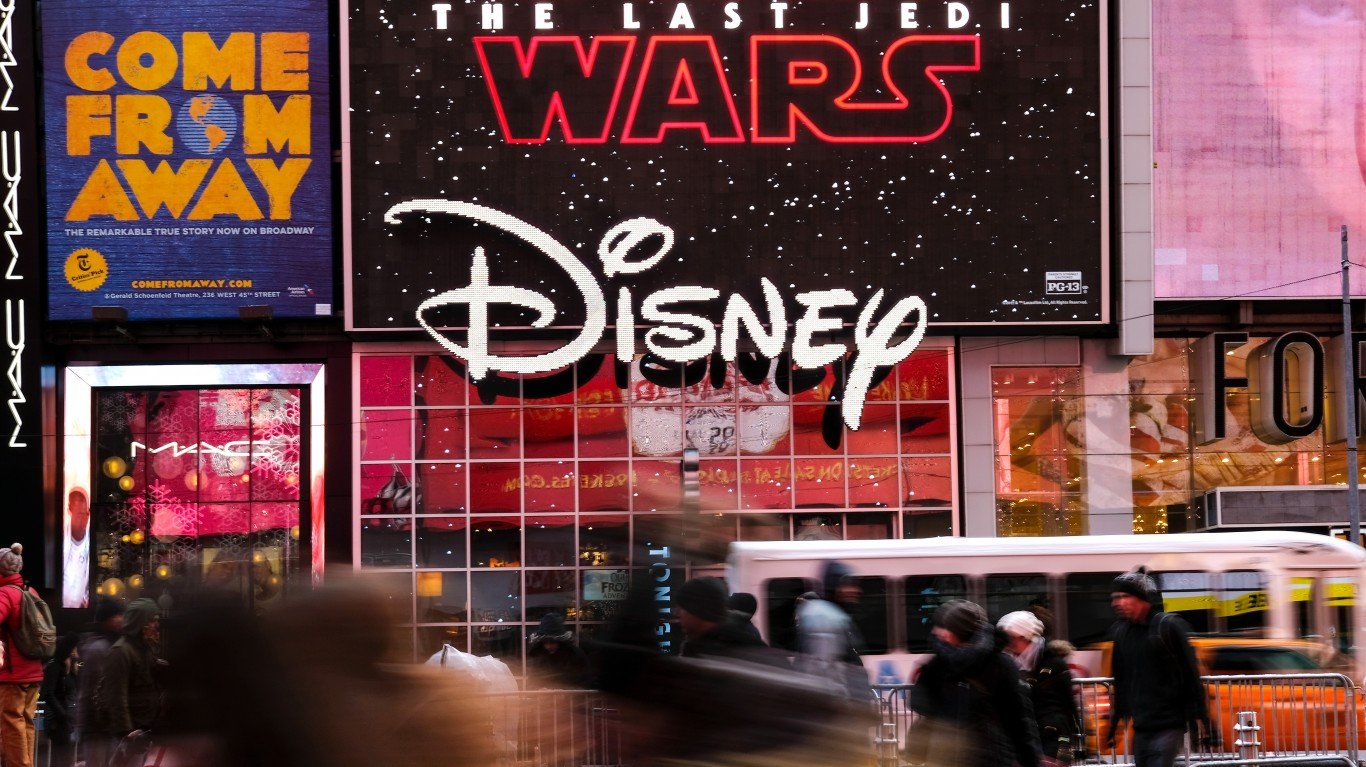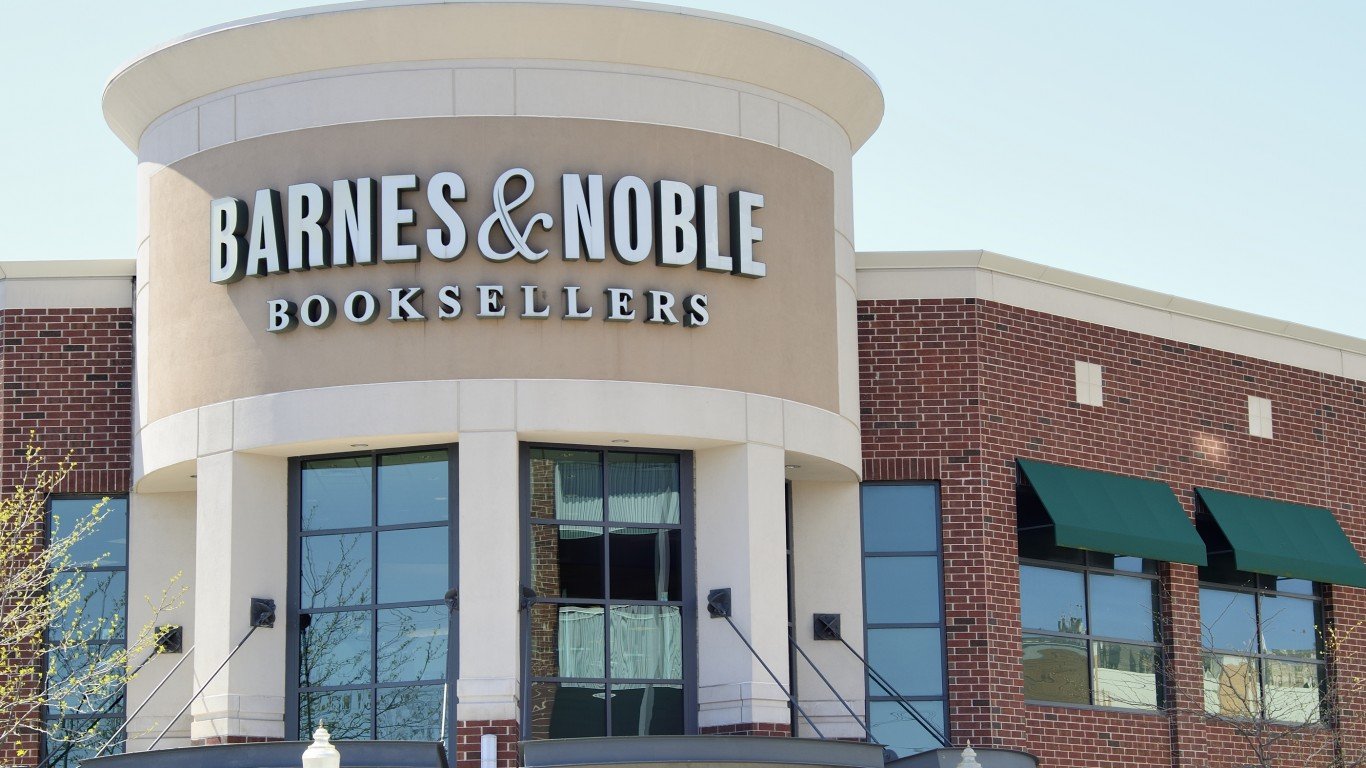

Companies disappear with great regularity. Within five years of starting up, about 50% of American companies go out of business. In the early months of the COVID-19 pandemic, thousands of bars and restaurants closed. It is, however, rare for organizations that have been around for decades — and grown into huge operations — to disappear. But this American company, Sears, has been ruined.
Companies that fail after many years often do so because of poor management. Another major reason is new and unexpected competition. This has increasingly become a factor in company failures in the present American economy. The advertising business has been upended by Google. Television viewership has been eroded by streaming services led by Amazon Prime and Netflix. Slowly, but surely, the gas-powered car sector is being challenged by electric cars.
No industry has been more upended by new competition than retail. Physical stores dominated the industry for centuries. Eventually, people could order items by mail from catalogues, but this way of reaching the customer was still only a modest success, except for Sears, which had a large mail order business.
The store-based retail sector has cratered in many cases because of one company — Amazon.com. It could pass Walmart as the largest U.S. company by revenue this year. (Speaking of Walmart, in terms of customer satisfaction, this is America’s worst retailer.)
E-commerce growth was helped by the COVID-19 pandemic. As people stayed in their homes, they ordered online. Entire national store chains were also forced to close all of their locations. (These are brands that disappeared in the last decade.)
Department store chain Sears was founded by Richard Warren Sears and Alvah Curtis Roebuck in 1892. Sears, Roebuck and Co. was the largest retailer in the U.S. for a number of years before it was passed by Walmart. Sears merged with Kmart in 2005 to form Sears Holdings. Sears Holdings went bankrupt in 2018. Based on the most recent information, it has 29 stores remaining. No one would be surprised to see those gone.
What happened to Sears? Some of it could have been predicted. Entire industries have been disrupted by new business models before. Any industry leader that does not invest in “the next big thing” may be overtaken by it. In the case of Sears, that “thing” was e-commerce. Having pioneered remote sales via the catalogue, Sears should have been on the cutting edge of non-store sales.
Additionally, there are many indications that Sears got greedy. It let its stores get old and shabby. It did not diversify into new lines of merchandise the way that Walmart did. In the final analysis, Sears was flat footed and took blow after blow until it could no longer survive.
To find 10 established American companies that have been ruined, 24/7 Wall St. editors selected American corporations founded before 1950 that have had a sharp decrease in their size, stature, and market share.
Click here to see which American company was ruined
1. Sears
> Year founded: 1892
At one point among the largest retailers in America, Sears merged with KMart in 2005. The marriage was a disaster. Neither company could successfully make a move to the big box, discount model which had been so successful with Target and Walmart. And has been the case with many brick-and-mortar retailers, Amazon ate away a large sum of revenue.
[in-text-ad]
2. JCPenney
> Year founded: 1902
JCPenney hired the head of Apple’s retail store operation in 2011. The theory was his highly successful approach to store configuration and marketing was portable. This new CEO, Ron Johnson, presided over a nearly immediate 25% drop in sales. John was out in less than two year, and Penney never recovered.
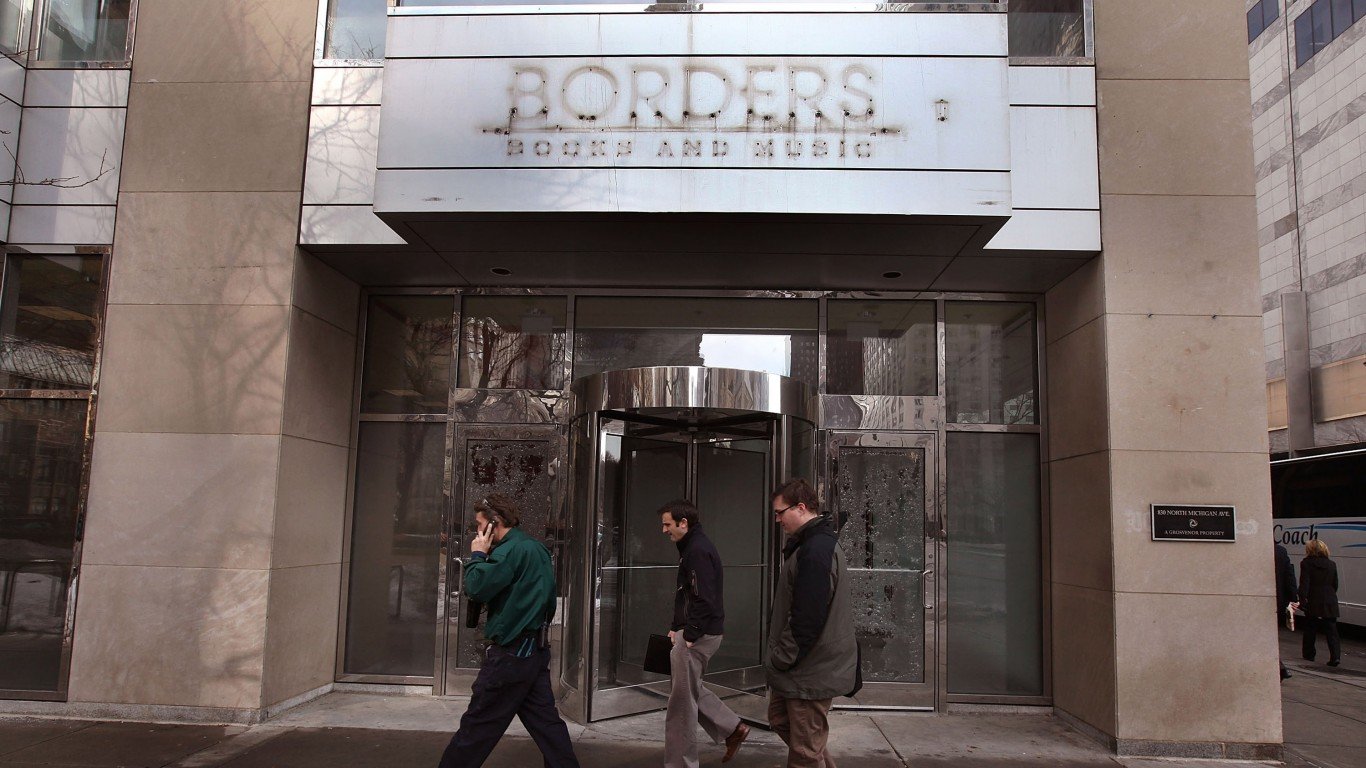
3. Borders Group
> Year founded: 1971
Borders faced two forces it could not overcome. One was competition from the much larger Barnes & Noble. The other was the move of book sales online. The company was liquidated in 2011.

4. Barnes & Noble
> Year founded: 1886
Barnes & Noble did not learn the lesson about competing with Amazon that should have been driven home when Borders failed. Not only did people buy books online, but Amazon also began the wave of people who read books on electronic devices. Book stores became increasingly unnecessary after Amazon launched its Kindle e-reader in 2007.
[in-text-ad-2]

5. International Business Machines Corporation
> Year founded: 1911
IBM was America’s preeminent technology company for eight decades. Late in the 20th century, it made two major mistakes. The first is that it allowed Microsoft to build the software that ran on the PCs IBM began to build in 1981. The decision helped start one of the world’s largest companies. IBM was also late to cloud computing, which is now dominated by Amazon.
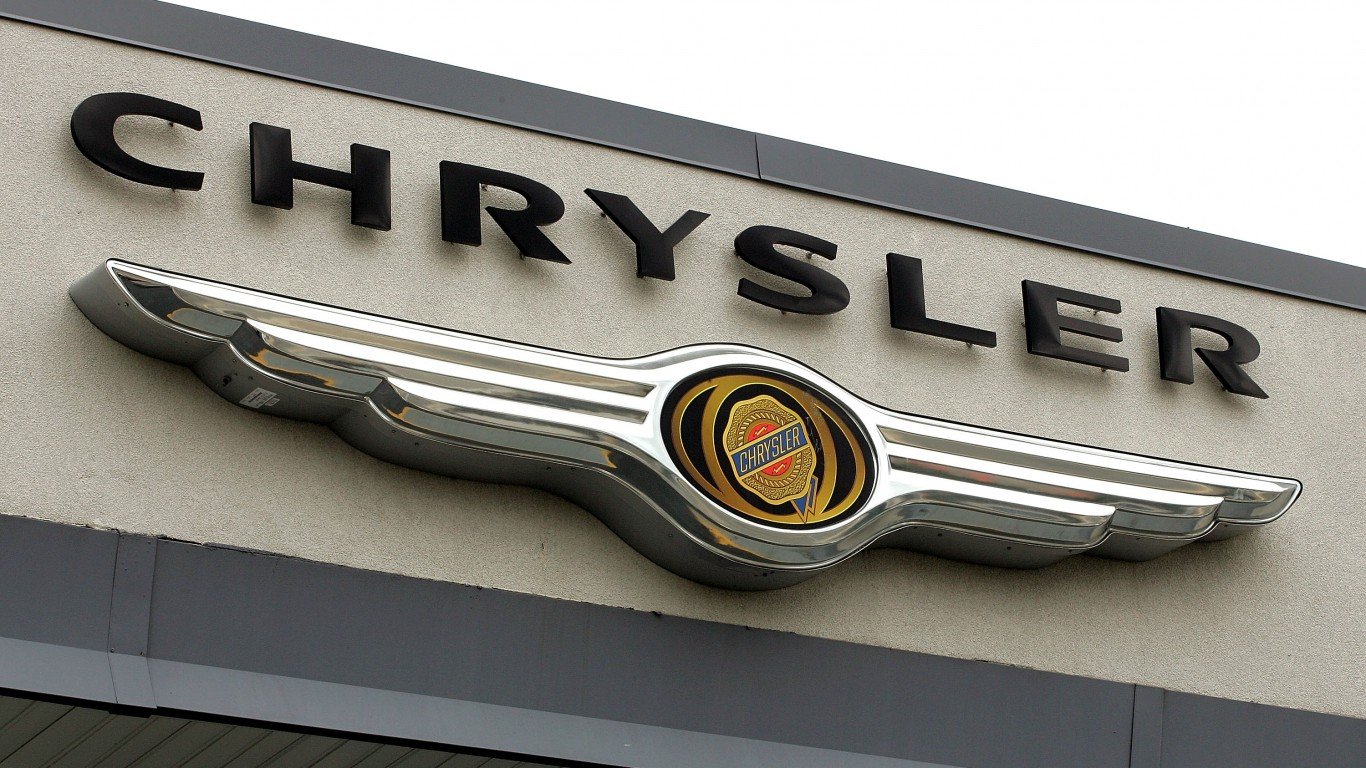
6. Chrysler
> Year founded: 1925
Chrysler was part of Detroit’s Big Three, although smaller than GM or Ford. Poor product choices drove it into bankruptcy in the 1980s. Car legend Lee Iocca turned the company around. The reprieve was short-lived. In 1998, Daimler-Benz, parent of Mercedes, merged with Chysler, and once again, its product quality deteriorated. The company filed for Chapter 11 again in 2009. It is now a tiny division of auto company Stellantis.
[in-text-ad]

7. Eastman Kodak Company
> Year founded: 1892
Eastman Kodak was among America’s great corporate innovators. It invented photographic film, for all intents and purposes. Amateur photographers rarely turned to any other film product. By the turn of the last century, most photography was done with digital cameras. Kodak was slow to make the transition. It went bankrupt in 2012.
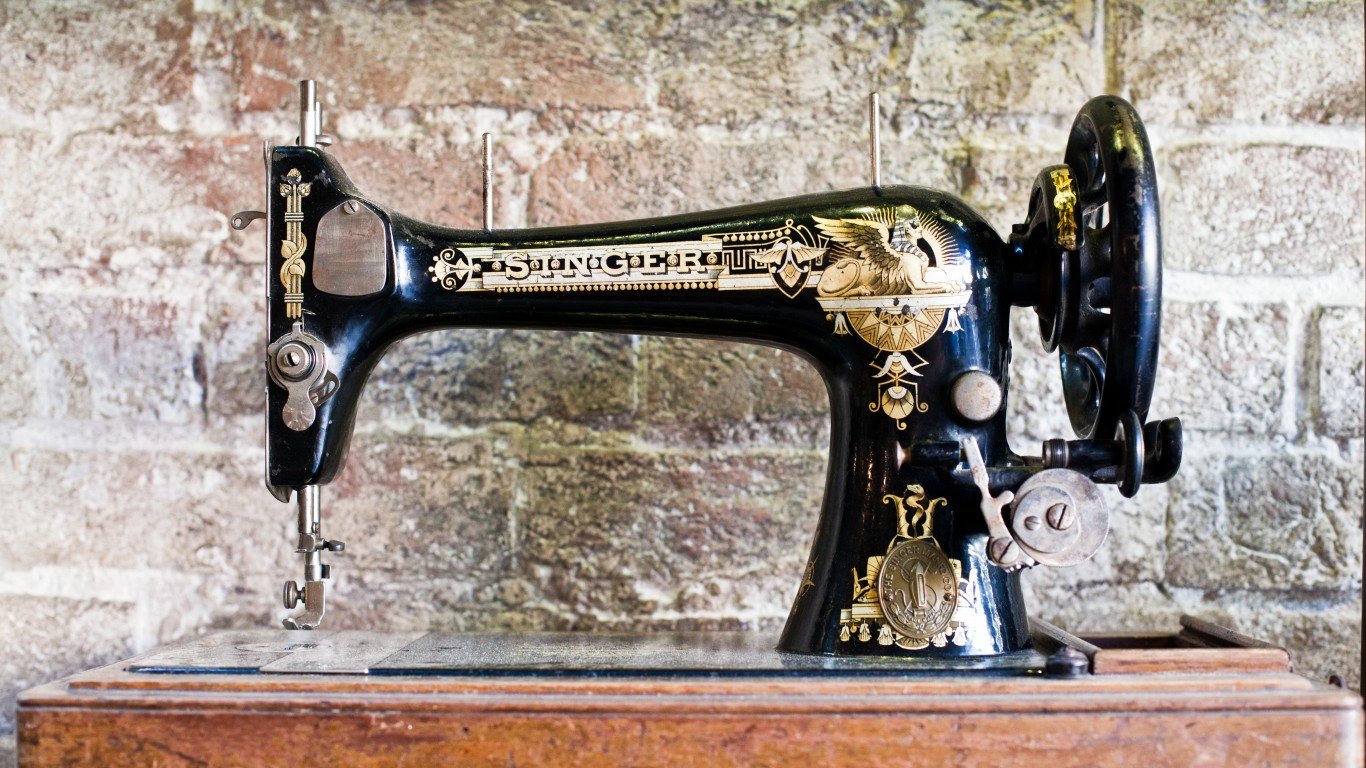
8. Singer Corporation
> Year founded: 1851
Singer began to mass produce sewing machines in the 1860s. Over the course of World War II, it moved from being the eight-decades leader in its industry to a weapons manufacturer. By the end of the war, it took back its poll position. For reasons that have never been completely understood, Singer began to diversify into industrial and business to business products. It also had to contend with new, popular Japanese products. It filed for Chapter 11 in 1999.

9. Bethlehem Steel Corporation
> Year founded: 1857
The U.S. was, for decades, the steel capital of the world. In the last 50 years, competition emerged in Japan and South Korea. As the 20th century started, Bethlehem was one of the largest industrial companies in America and had added shipbuilding to its portfolio. Its largest challenge was steel made in Asia that had lower labor cost. Despite a brief comeback in the late 1980s, Bethlehem Steel’s market share continued to fall, and it went bankrupt in 2001.
[in-text-ad-2]
10. Republic Steel
> Year founded: 1899
Republic Steel’s list of problems are nearly a carbon copy of Bethlehem’s. Prosperous for 60 years, it ran into foreign competition in the 1970s. In 1984, it merged with Jones and Laughlin Steel, which created cost efficiencies for both companies. This allowed it to survive. After several restructurings, it became part of RES in 2005. RES was in turn bought by Mexico’s Industrias CH, S.A de C.V. in 2011.
Sponsored: Attention Savvy Investors: Speak to 3 Financial Experts – FREE
Ever wanted an extra set of eyes on an investment you’re considering? Now you can speak with up to 3 financial experts in your area for FREE. By simply
clicking here you can begin to match with financial professionals who can help guide you through the financial decisions you’re making. And the best part? The first conversation with them is free.
Click here to match with up to 3 financial pros who would be excited to help you make financial decisions.
Thank you for reading! Have some feedback for us?
Contact the 24/7 Wall St. editorial team.
